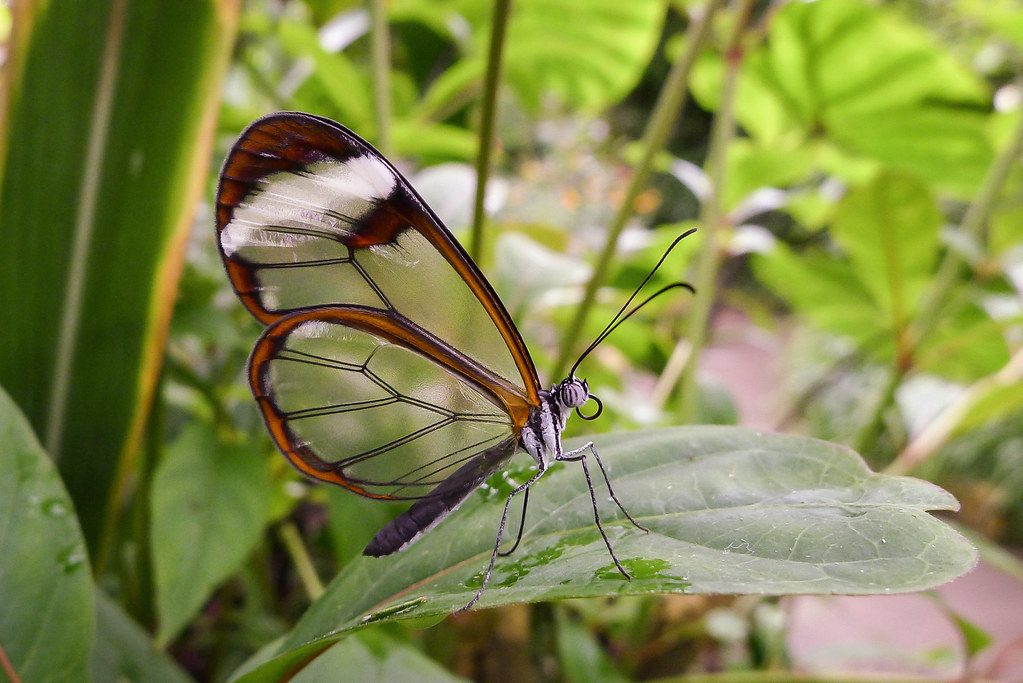In the lush rainforests of Central and South America flutters one of nature’s most remarkable optical illusions – the glasswing butterfly. Unlike their colorful cousins that advertise their presence with vibrant patterns, these delicate insects have evolved a different survival strategy: virtual invisibility. With wings as transparent as glass, these butterflies seem to vanish before our eyes, blending seamlessly into their surroundings. This extraordinary adaptation represents one of evolution’s most elegant solutions to the constant predator-prey arms race. The science behind this transparency isn’t just fascinating – it’s inspiring biomimicry researchers and materials scientists to develop new technologies based on these natural marvels.
The Glasswing Identity: Meeting Greta oto
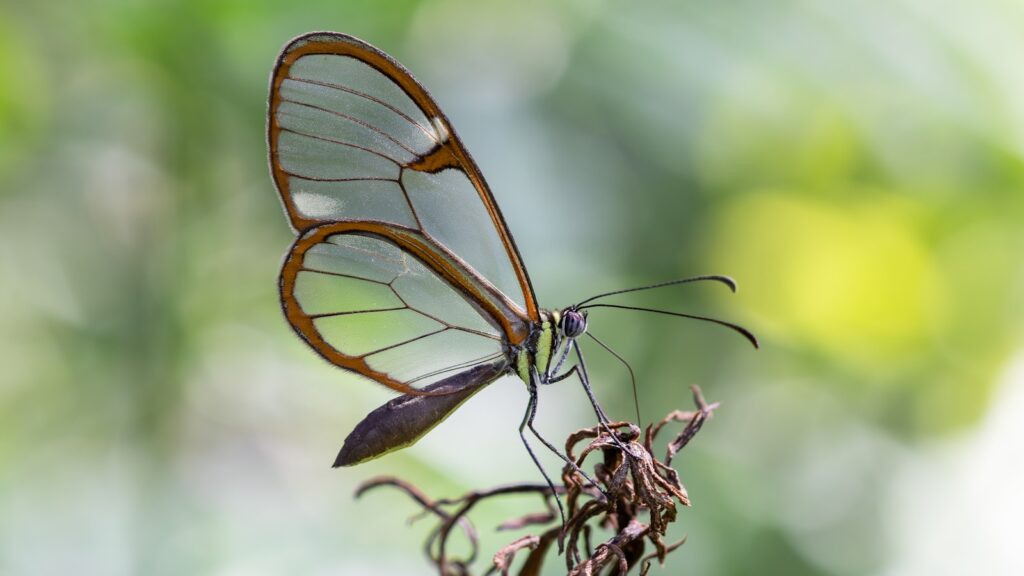
The most famous glasswing butterfly, scientifically known as Greta oto, belongs to the subfamily Danainae in the family Nymphalidae. These medium-sized butterflies feature wingspans of 5.6 to 6.1 centimeters (2.2 to 2.4 inches), with their most distinctive feature being large transparent areas on their forewings and hindwings. The wing borders typically display an opaque reddish-brown coloration, creating a striking visual contrast with the clear central portions. Glasswings primarily inhabit tropical rainforest environments stretching from Mexico through Panama and into parts of South America, where their transparency serves as perfect camouflage among the dappled light and shadows of the forest understory. Despite their delicate appearance, these butterflies are surprisingly strong fliers and can migrate considerable distances between forest habitats.
The Physics of Invisibility: How Transparency Works
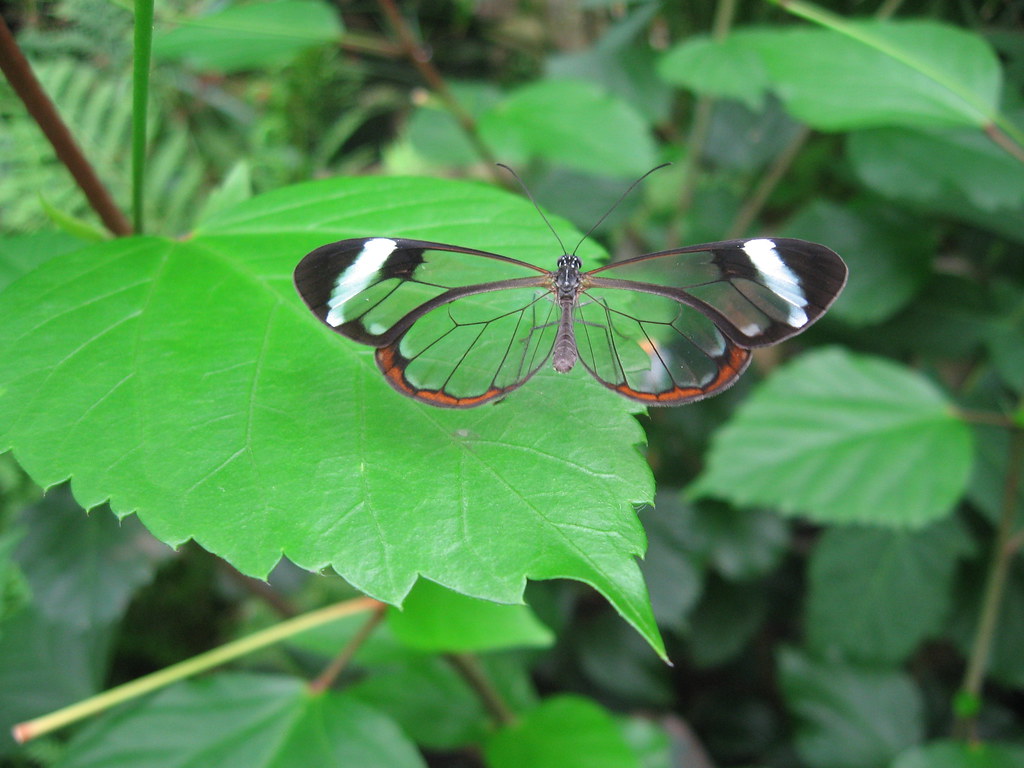
Transparency in physical terms occurs when light passes through a material with minimal absorption, reflection, or scattering – essentially allowing most incoming light to continue on its original path. For glasswing butterflies, this remarkable property manifests in the transparent regions of their wings, which lack the colored scales that typically cover butterfly wings. Instead, these areas feature specialized transparent scales arranged in such a way that they minimize light reflection from all viewing angles. The transparent scales aren’t actually empty; they contain nanopillars made of chitin that are arranged in a precise pattern that allows more than 99% of light to pass directly through the wing. This arrangement effectively eliminates the boundaries between air and wing material that would normally cause light to reflect, creating what physicists call an “anti-reflective” surface similar to those found on high-end camera lenses.
Microscopic Marvels: The Nanoscale Architecture
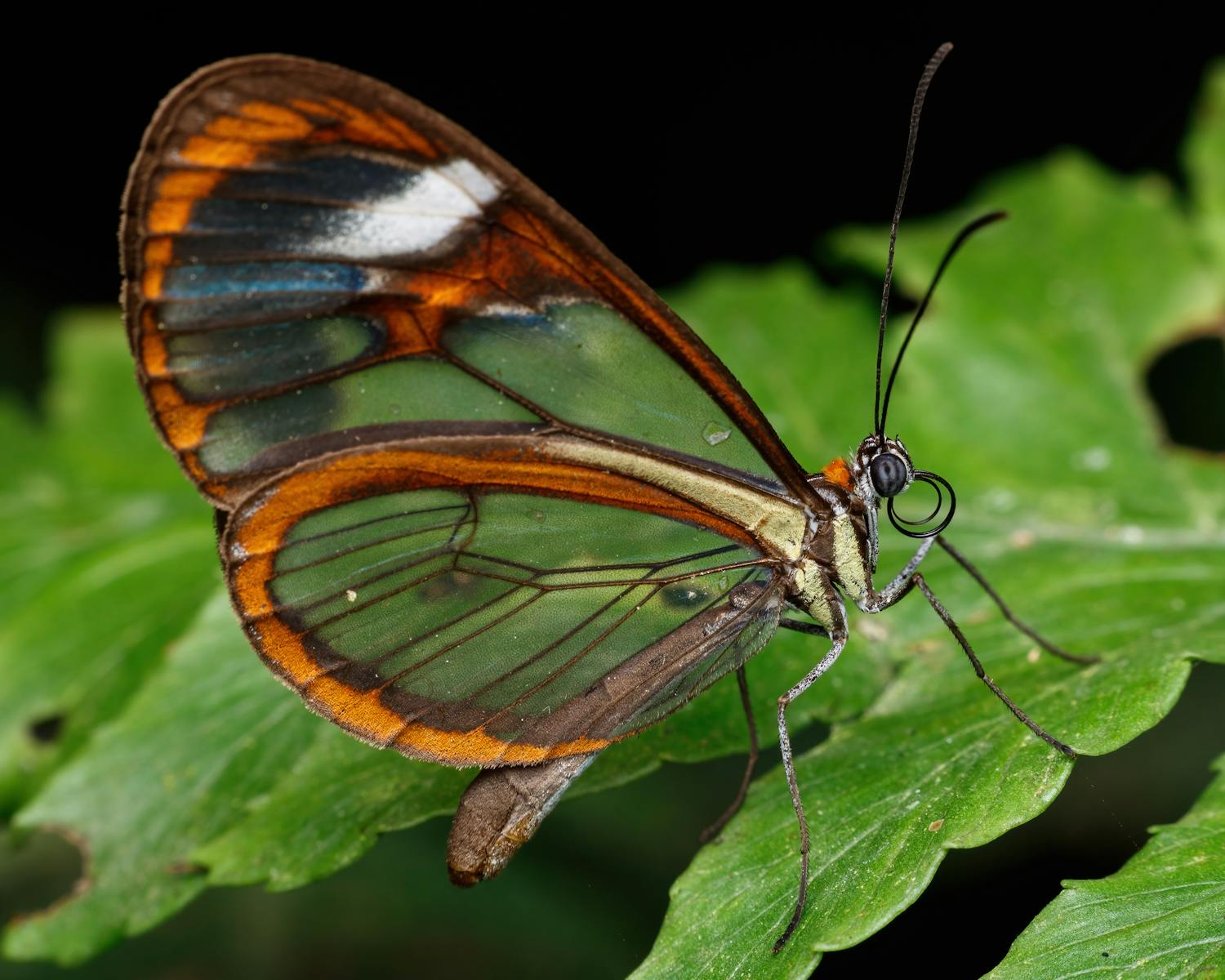
The true magic of glasswing transparency becomes apparent only under powerful microscopes. Researchers examining the wings at the nanometer scale have discovered an incredibly sophisticated structure of tiny pillars measuring about 100 nanometers in diameter and spaced approximately 150 nanometers apart. These dimensions are critical – they’re smaller than the wavelength of visible light (400-700 nanometers), which means light waves interact with the entire surface as if it were uniform rather than composed of discrete structures. The random height distribution of these nanopillars creates a gradual refractive index change from air to wing material, preventing the sharp boundary that would normally cause reflection. Additionally, these nanopillars feature a waxy coating that enhances their anti-reflective properties by further reducing the difference in refractive index between air and wing. This sophisticated arrangement allows light to pass through with minimal disturbance, rendering the wings nearly invisible from most angles.
Evolution’s Masterpiece: The Development of Transparency

The evolution of transparent wings represents a fascinating example of natural selection solving a complex physical problem. Scientists believe this adaptation emerged gradually over millions of years as a response to predation pressure, particularly from birds that hunt by sight. Early ancestors of glasswings likely had partially transparent wings, with individuals possessing greater transparency gaining a survival advantage by being less visible to predators. This selective pressure favored mutations that reduced scale pigmentation and altered scale structure to minimize light reflection. Comparative genomic studies between glasswings and their opaque relatives have identified several genes associated with chitin formation and arrangement that show significant differences, suggesting these were targets of evolutionary selection. Interestingly, transparent wings have evolved independently in several butterfly and moth lineages, demonstrating convergent evolution toward this effective camouflage strategy in different groups facing similar predation challenges.
Beyond Simple Transparency: The Anti-Glare Advantage
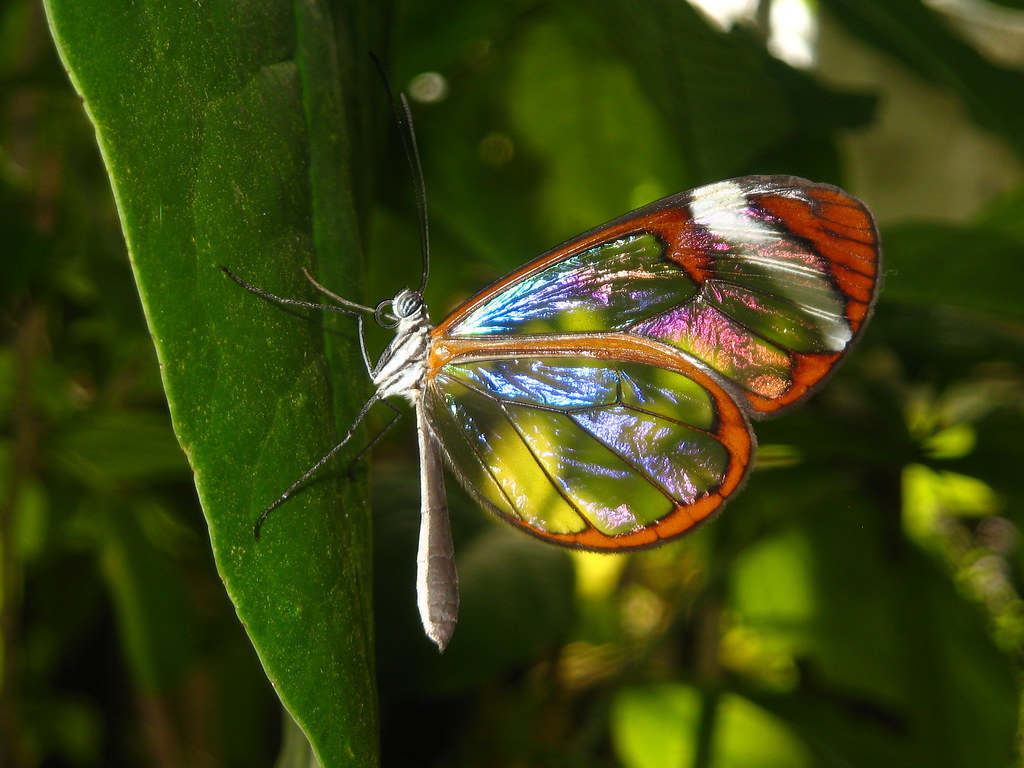
The glasswing butterfly’s adaptation goes beyond mere transparency to solve a problem that challenges even modern optical engineers: glare reduction. While transparency allows light to pass through, most transparent materials still produce noticeable glare or reflections at certain angles – think of how glass windows become reflective under specific lighting conditions. The glasswing’s nanopillars effectively eliminate this problem by creating a surface with “omnidirectional” anti-reflective properties. Research published in Nature Communications demonstrated that these wings maintain their transparency when viewed from almost any angle, with reflection reduced to less than 2% across the entire visible spectrum. This omnidirectional anti-reflective property proves particularly valuable in the dappled light environment of rainforests, where sunlight enters from various angles throughout the day. By eliminating telltale glints and reflections that might catch a predator’s eye, the glasswing achieves a nearly perfect invisibility shield that works under diverse lighting conditions.
The Best of Both Worlds: Combining Transparency and Color

While the transparent portions of glasswing butterfly wings receive the most attention, these insects haven’t abandoned color entirely. The opaque borders of their wings typically display reddish-brown pigmentation created by conventional butterfly scales containing melanin and other pigments. This dual-design approach represents an evolutionary compromise that balances different survival needs. The colored borders may serve important functions in mate recognition, territorial displays, and thermoregulation (as darker colors absorb more heat from sunlight). Some species also incorporate warning coloration that mimics toxic butterflies, gaining protection through Batesian mimicry while maintaining the predator-evasion advantage of partial transparency. This strategic combination of visibility and invisibility demonstrates how natural selection can produce sophisticated design solutions that address multiple evolutionary pressures simultaneously.
Other Transparent Creatures: A Convergent Solution
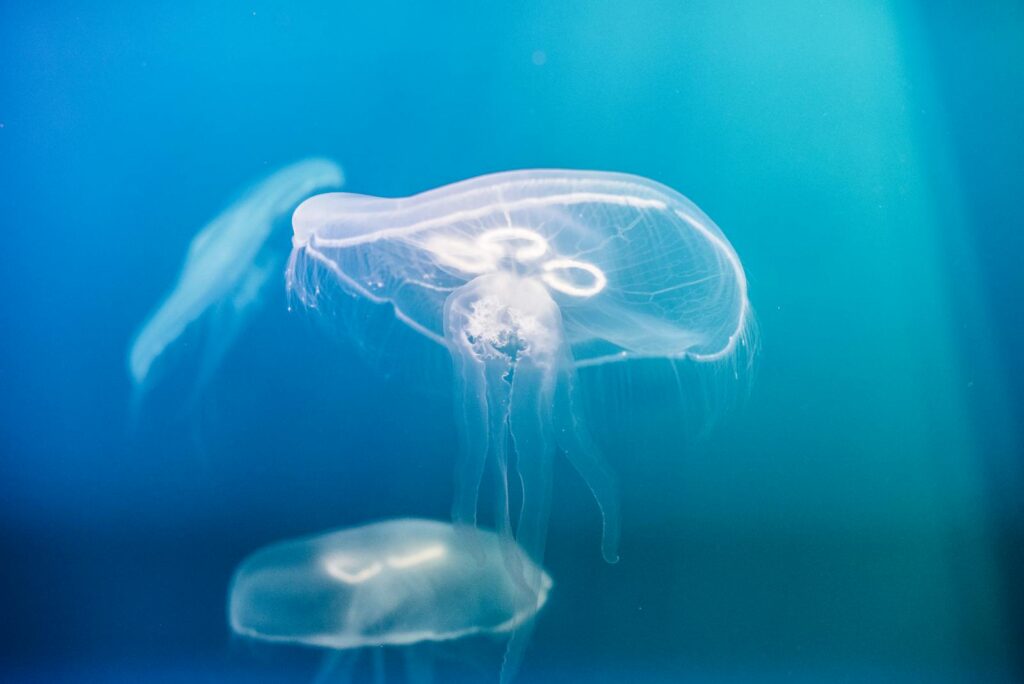
Transparency has evolved independently in numerous animal groups, suggesting its effectiveness as a camouflage strategy in certain environments. In marine ecosystems, transparency is particularly common, with creatures like jellyfish, salps, and many larval fish forms adopting this strategy to blend into the water column. On land, besides glasswing butterflies, certain frogs like the glass frog (Hyalinobatrachium) have evolved transparent skin through which their internal organs are visible. The repeated evolution of transparency across diverse animal groups demonstrates convergent evolution – the process by which unrelated organisms develop similar traits in response to similar environmental challenges. However, the mechanisms producing transparency differ significantly between these groups. While glasswings achieve transparency through sophisticated nanoscale structures, marine creatures often use different approaches involving specialized proteins and tissue arrangements that minimize light scattering within their bodies.
Seeing Without Being Seen: Predator Evasion Strategies

The primary evolutionary advantage of transparency for glasswing butterflies is undoubtedly predator evasion, particularly against visually hunting birds. Field studies have confirmed that birds have significantly more difficulty detecting transparent-winged butterflies against complex forest backgrounds compared to their opaque counterparts. This camouflage strategy differs fundamentally from the more common approaches of background matching (developing colors and patterns that match the environment) or disruptive coloration (patterns that break up the body outline). Instead, transparency represents a form of “background-independent camouflage” that works regardless of the specific setting, provided there’s some visual complexity behind the butterfly. Beyond passive concealment, glasswings have evolved behavioral adaptations that enhance their transparency-based defense, including preferences for resting in positions that maximize light transmission through their wings and a flight pattern characterized by short bursts of movement followed by periods of stillness when potential predators are detected.
Challenges of Transparency: Maintaining Clear Wings
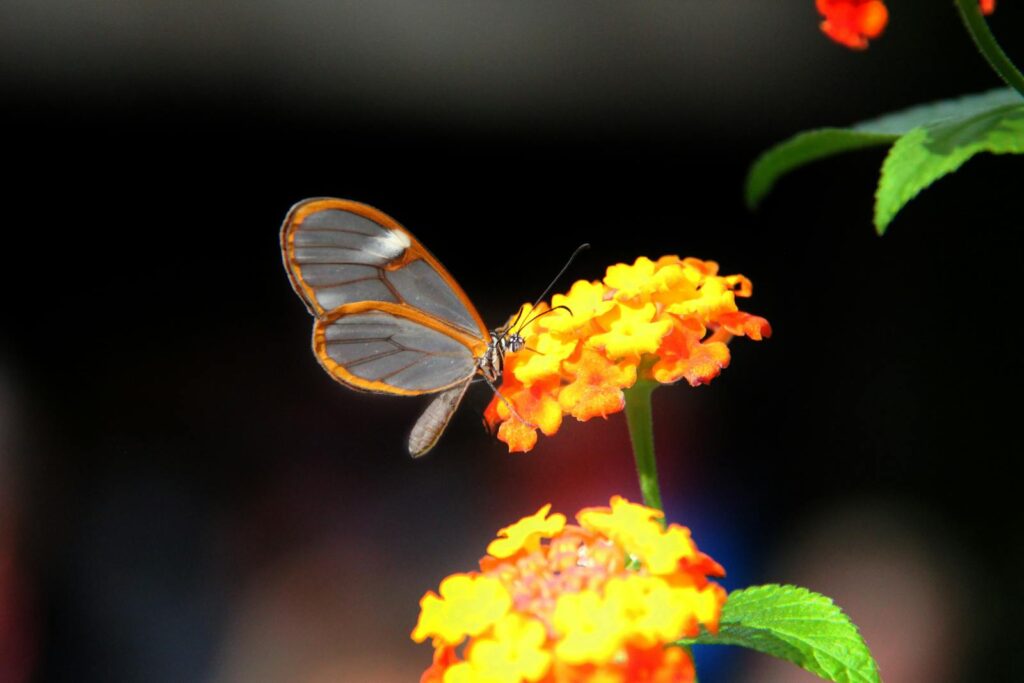
Maintaining functional transparency presents several biological challenges that glasswing butterflies must overcome. One significant issue is keeping their transparent wings clean, as dust, pollen, or water droplets would significantly reduce their camouflage effectiveness. Researchers have discovered that glasswing wings possess remarkable self-cleaning properties derived from their nanopillar structure and waxy coating, causing water to form spherical droplets with minimal surface contact that easily roll off, carrying contaminants away. This “lotus effect” represents a sophisticated adaptation that maintains wing clarity with minimal energy expenditure. Another challenge involves the physical durability of transparent structures, as the removal of pigmented scales could potentially weaken the wing membrane. The glasswing addresses this through modified transparent scales that, while lacking pigmentation, still provide structural support and maintain wing integrity during flight. Additionally, the transparent regions contain specialized “microprojections” that appear to function as mechanical reinforcements without compromising optical clarity.
From Wings to Windows: Biomimetic Applications

The extraordinary anti-reflective properties of glasswing butterfly wings have inspired numerous biomimetic technologies aimed at reducing glare and enhancing transparency in human-made materials. Researchers at the University of Pennsylvania have developed a film with nanopillars modeled after glasswing structures that can be applied to solar panels, potentially increasing energy capture by reducing light reflection that typically accounts for up to 8% efficiency loss in conventional panels. Similar technologies are being explored for smartphone screens and eyeglasses, where glare reduction would enhance visibility in bright conditions. Perhaps most promisingly, medical device manufacturers are investigating glasswing-inspired coatings for endoscopes and other optical diagnostic tools, where improved light transmission could enhance imaging quality during minimally invasive procedures. These applications demonstrate how studying evolutionary adaptations can yield valuable insights for solving human technological challenges, often revealing elegant solutions that engineers might not have conceived independently.
Conservation Concerns: Protecting Nature’s Transparency

Despite their remarkable adaptations, glasswing butterflies face significant threats from habitat destruction across their Central and South American range. Deforestation for agriculture, particularly coffee and banana plantations, has eliminated substantial portions of their rainforest habitat, while climate change threatens to alter the delicate ecological balance these specialists require. The glasswing’s specific dietary needs compound these challenges, as their caterpillars feed primarily on plants in the Solanaceae family, many of which have restricted distributions. Conservation efforts focus on habitat preservation and the establishment of butterfly corridors connecting fragmented forest patches. Several botanical gardens and butterfly conservatories throughout the Americas have established glasswing breeding programs aimed at maintaining genetic diversity and potentially supporting reintroduction efforts. The preservation of these transparent marvels represents not just an ecological imperative but also protection of a unique evolutionary achievement that continues to inspire scientific discovery.
Observing the Invisible: Finding Glasswings in the Wild

Spotting glasswing butterflies in their natural habitat presents a delightful challenge for wildlife enthusiasts and photographers. The best viewing opportunities typically occur during the dry season in tropical forests from Mexico to Panama, particularly in mid-elevation cloud forests between 2,500 and 4,500 feet. National parks like Monteverde Cloud Forest Reserve in Costa Rica and Soberanía National Park in Panama offer reliable viewing locations where glasswings can be observed visiting flowering plants for nectar. Patient observers should focus attention on patches of sunlight filtering through the canopy, where the subtle outline or shadow of transparent wings might reveal a resting butterfly. Many eco-lodges throughout Central America maintain gardens with specific plants that attract these butterflies, offering more accessible viewing opportunities. Photographers seeking to capture these ethereal insects face unique challenges, as conventional photography techniques often fail to properly render transparency against complex backgrounds, typically requiring specialized lighting approaches to highlight the wings’ delicate structure without losing their transparent quality.
The Future of Transparency Research

The study of glasswing butterfly transparency continues to advance rapidly, with new research directions emerging across multiple scientific disciplines. Geneticists are working to fully map the genomic basis of transparency, identifying specific genes and regulatory mechanisms that control the development of transparent scales and their nanopillar arrangements. Materials scientists are exploring ways to replicate the glasswing’s anti-reflective properties using sustainable materials that could be deployed in large-scale applications like building windows and solar installations. Perhaps most intriguingly, some researchers are investigating potential medical applications, such as transparent protective coatings for implantable medical devices that might reduce rejection responses by becoming visually “hidden” from the body’s immune system. The interdisciplinary nature of this research highlights how a single evolutionary adaptation can spark scientific inquiry across fields ranging from evolutionary biology to nanotechnology, demonstrating the enduring value of biomimicry as an approach to technological innovation.
Conclusion

The glasswing butterfly stands as one of nature’s most elegant examples of adaptation through transparency, achieving near-invisibility through sophisticated nanoscale engineering that predates human technology by millions of years. Their wings represent a perfect marriage of form and function – an evolutionary solution that turns the physics of light into a powerful survival strategy. As we continue to unravel the mechanisms behind this remarkable adaptation, we not only gain insight into evolutionary processes but also discover new approaches to human technological challenges. In a world increasingly defined by human modification of natural systems, these transparent butterflies remind us that some of the most sophisticated solutions to complex problems can be found by carefully observing and learning from nature’s long process of evolutionary refinement.

